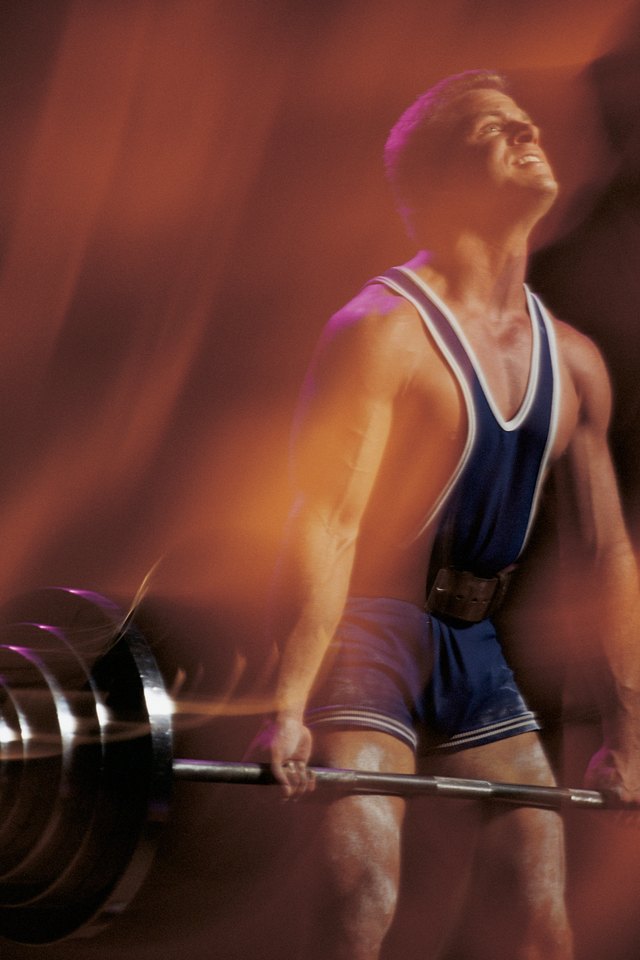Tricks to Stop Back Arching on a Deadlift

Your back should arch -- or at least remain flat -- on the deadlift. What it should not do is round forward. An arched back limits the strain on the muscles of your lower back and spine. A round back -- where you lean forward -- causes your spine to flex forward, which increases your risk of injury in more than one manner. Consult a health care practitioner before beginning any strength-training program.
Flexion
Flexion occurs when your spine rounds forward. If you are rounded forward, you are flexed, not arched. This causes the vertebrae of your spine to compress, but also to compress forward. This compression puts uneven pressure on your spinal discs, pushing fluid out that would otherwise distribute the force your spinal column is under in a more even manner. When your back is flat or slightly arched, your discs compress straight down, allowing for maximal dispersion of force.
Technique
The most basic technique to improve your posture during the deadlift is your setup. Your shins should be against the bar and your feet no farther apart than your shoulders. While your hands must be outside your legs during the conventional deadlift, keep them as close as possible. This allows you to bend your knees more and push your hips back and down. This position gets your shoulders behind the bar and allows you more leg drive. When you drive the bar off of the floor, push your hips forward -- hard.
Abdominals
Strong abdominals and obliques help maintain an arched or neutral spine during the deadlift. To support you under heavy weight, your abdominals must be trained hard. Perform heavy, weighted situps for no more than 15 repetitions per set. If you can do more repetitions, add weight. Heavy, weighted side bends build your obliques, which help keep your torso stable during many activities. Perform no more than 15 repetitions per set, and when performing side bends, ensure that your back remains arched.
Tips and Tricks
Wear flat-soled shoes when deadlifting. Shoes with an elevated heel push your knees forward, which makes it harder to keep your hips down at the start of the deadlift. Drag the bar up your legs; do not allow it to drift out in front of you. The further the bar is away from you, the more it pulls your back forward. Keep your chest out during the deadlift, and do not try to pull with your lower back. Push your shoulders back, which helps maintain proper posture during the lift.
References
- "Physiology of Sport and Exercise, Fourth Edition"; Dr. Jack H. Wilmore, et al.; 2007
- "The Westside Barbell Book of Methods"; Louie Simmons; 2008
Writer Bio
Grey Evans began writing professionally in 1985. Her work has been published in "Metabolics" and the "Journal of Nutrition." Gibbs holds a Ph.D. in nutrition from Ohio State University and an M.S. in physical therapy from New York University. She has worked at the Olympic Training Center in Colorado Springs and currently develops comprehensive nutritional and rehabilitative programs for a neurological team.
